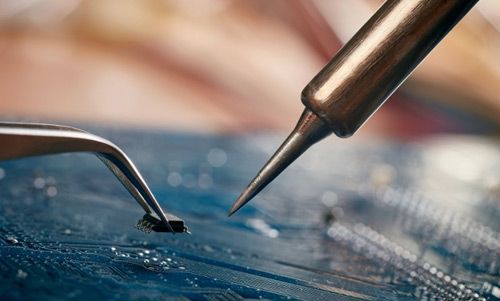


Soldering is an important part of working with components. It is a skill engineers need to be able to master in order to create seamless connections, which ensures stable joints and that electrical currents flow smoothly.
Here, Holger Engelbrecht, product manager of reichelt elektronik, gives you four top tips to help you master this skill.
1. Use the right tool
For electrical soldering, important tools include a stripping tool, tweezer set, side cutter, circuit board, and a dry sponge for cleaning. It’s also a good idea to use a soldering station where possible, as it can maintain the temperature throughout the soldering process.
2. Use the right solder
Solder is partly made up from lead, which has a lower melting temperature and better flux properties than other metals. However, it might be a little bit harder to use than a non-leaded solder and can potentially produce hazardous fumes if not correctly handled. Alternate solder options should be considered for health reasons.
3. Work at the optimal temperature
Did you know there is a difference between soft and hard soldering? Soft solder melts at less than 450 degrees Celsius, whereas the liquid temperature of Hartoten is between 450 and 900 degrees Celsius. The temperature you should work with depends on the components you are using (the soldering temperature for electronic components is 300 to 320 degrees Celsius so soft soldering can be used here). Check the melting temperature of your soldering tin, as well as the working temperature of your flux. It should be above the two minimum values, but it must not exceed the maximum operating temperature of the flux, as it will evaporate.
If the temperature is too low, the solder will not be shiny and drop-shaped, resulting in a poor connection that won’t work.
4. For electrical soldering: Beware of electrostatic discharge (ESD)
Many electronic components are sensitive and can be damaged by voltage surges. This can lead to a failure of the entire device later on. Help to prevent this by working with ESD working mats, gloves, brushes, and a wrist strap with an ESD lead-out cable.
Check out this simple step by step video below, which demonstrates how to solder properly.
